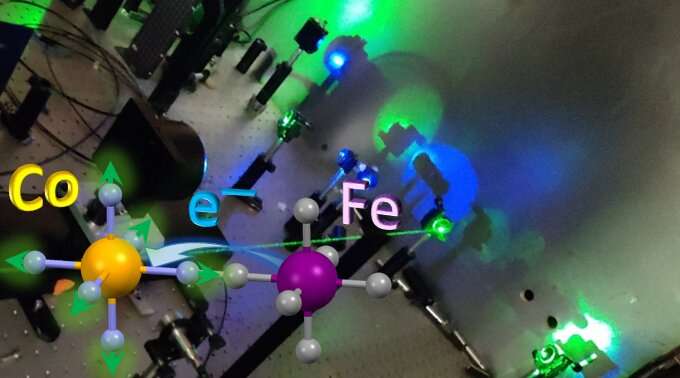Photomagnetism can be achieved through atomic motion that leads to the transfer of electrons. Credit: Eric Collet, Institute of Physics in Rennes (CNRS/Université de Rennes 1)
Photo-induced electron transfer is central to numerous physical processes, for instance in the magnetization of materials. The quest to understand and control this ultrafast process has long been pursued in vain, with no answer to the question of whether electrons induce atomic motion, or vice versa.
To answer this question, the atomic equivalent of the paradox of the chicken and the egg, a consortium of scientists led by the Institute of Physics in Rennes (CNRS/Université de Rennes 1) used an X-ray laser (X-FEL) located in Stanford.
This latest-generation instrument can observe, in real time, the electrons and atoms that make up matter. In the system studied, experiments showed that light triggers the ultrafast distortion of the molecular structure of cobalt atoms. This leads to the transfer of iron atoms toward cobalt atoms, thereby making the system magnetic.
This research, published in Nature Chemistry on December 7, 2020, shows that it is possible to distinguish between the electronic dynamics of atomic motion on the scale of one tenth of one millionth millionth of a second (or 100 femtoseconds).
This opens the way for the development of a science that can control materials through light.
More information: Charge transfer driven by ultrafast spin transition in a CoFe Prussian blue analogue, Nature Chemistry (2020). DOI: 10.1038/s41557-020-00597-8 , www.nature.com/articles/s41557-020-00597-8
Journal information: Nature Chemistry
Provided by CNRS
























